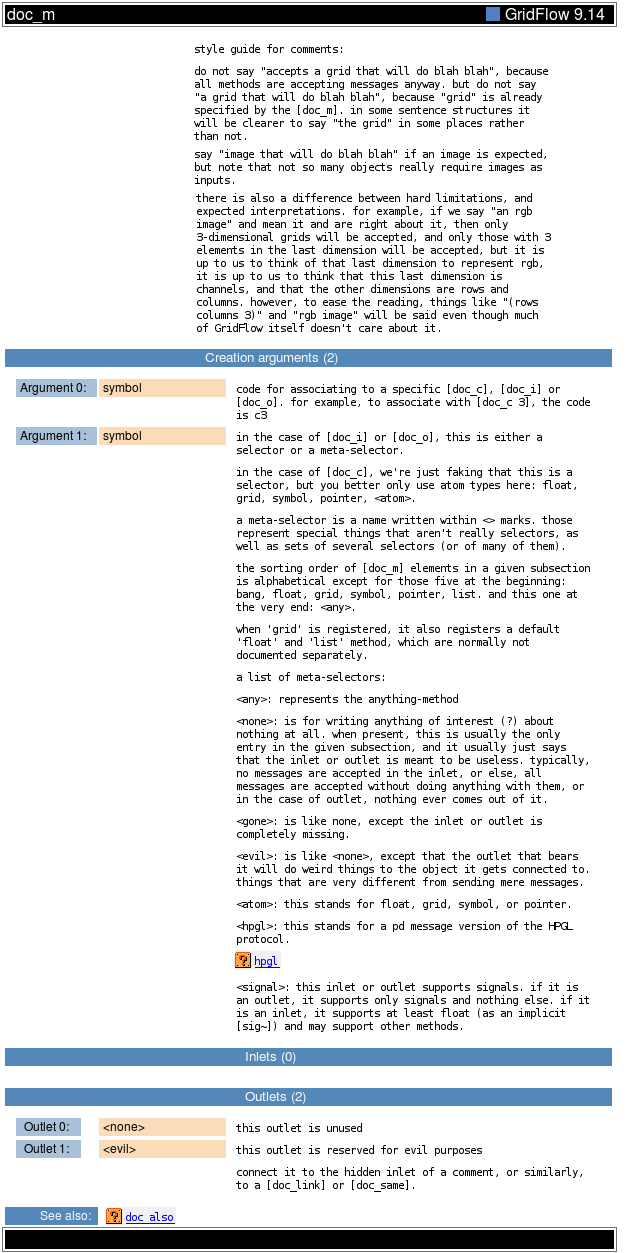
code for associating to a specific [doc_c], [doc_i] or [doc_o]. for example, to associate with [doc_c 3], the code is c3
in the case of [doc_i] or [doc_o], this is either a selector or a meta-selector.
the sorting order of [doc_m] elements in a given subsection is alphabetical except for those five at the beginning: bang, float, grid, symbol, pointer, list. and this one at the very end: .
a list of meta-selectors:
: represents the anything-method
: is for writing anything of interest (?) about nothing at all. when present, this is usually the only entry in the given subsection, and it usually just says that the inlet or outlet is meant to be useless. typically, no messages are accepted in the inlet, or else, all messages are accepted without doing anything with them, or in the case of outlet, nothing ever comes out of it.
: is like , except that the outlet that bears it will do weird things to the object it gets connected to. things that are very different from sending mere messages.
: this stands for a pd message version of the HPGL protocol.
in the case of [doc_c], we're just faking that this is a selector, but you better only use atom types here: float, grid, symbol, pointer, .
: this stands for float, grid, symbol, or pointer.
: is like none, except the inlet or outlet is completely missing.
style guide for comments:
do not say "accepts a grid that will do blah blah", because all methods are accepting messages anyway. but do not say "a grid that will do blah blah", because "grid" is already specified by the [doc_m]. in some sentence structures it will be clearer to say "the grid" in some places rather than not.
a meta-selector is a name written within <> marks. those represent special things that aren't really selectors, as well as sets of several selectors (or of many of them).
say "image that will do blah blah" if an image is expected, but note that not so many objects really require images as inputs.
there is also a difference between hard limitations, and expected interpretations. for example, if we say "an rgb image" and mean it and are right about it, then only 3-dimensional grids will be accepted, and only those with 3 elements in the last dimension will be accepted, but it is up to us to think of that last dimension to represent rgb, it is up to us to think that this last dimension is channels, and that the other dimensions are rows and columns. however, to ease the reading, things like "(rows columns 3)" and "rgb image" will be said even though much of GridFlow itself doesn't care about it.
: this inlet or outlet supports signals. if it is an outlet, it supports only signals and nothing else. if it is an inlet, it supports at least float (as an implicit [sig~]) and may support other methods.
when 'grid' is registered, it also registers a default 'float' and 'list' method, which are normally not documented separately.
this outlet is unused
this outlet is reserved for evil purposes
connect it to the hidden inlet of a comment, or similarly, to a [doc_link] or [doc_same].
